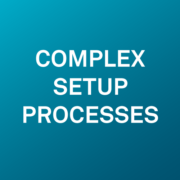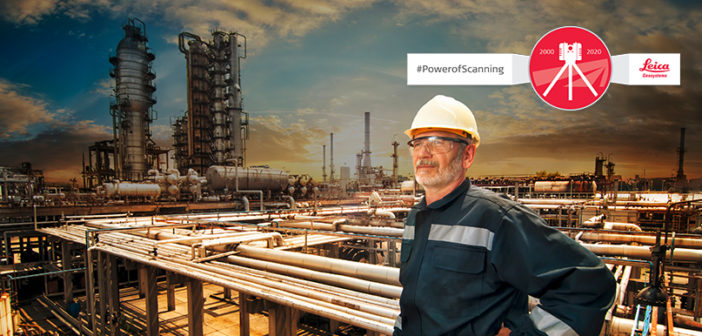Scanning and creating 3D models of tall buildings, wide objects and hard-to-reach infrastructure often comes with difficulties. It could be that the site is located in a particularly inhospitable place, say a windswept hillside. Or maybe it is so large that it’s made up of millions of data points. It could even be that the site is simply unreachable safely on foot.
Whatever the reason, these difficulties can slow you down, hitting productivity in the process. But it doesn’t have to be this way. Choosing the right technology for the task can help you overcome many of the common challenges presented by large-scale infrastructure sites. Here’s how.
 Working in inhospitable conditions
Working in inhospitable conditions
Large-scale infrastructure needs large spaces. So you’ll often find it a long way outside cities and towns where conditions can be less than ideal. Dams, for example, are usually located on higher ground where temperatures can be low and wind high. This can be hard on equipment, sometimes leading to inaccurate data capture or, worse, broken instruments and costly site revisits — none of which helps productivity.
Hence, the equipment you use for capturing large structures needs to be as tough as the terrain. The Leica ScanStation P40 is one such instrument. Highly durable, it performs in temperatures between – 20°C and + 50°C, and complies with the IP54 rating for dust and water resistance. So whether your next job takes you to a mountainside or the desert, your equipment won’t let you down.
 Scale
Scale
The sheer size of many large infrastructure sites can put a dent in your productivity. A large industrial complex will typically contain hundreds of millions of data points, which can be a little daunting with the wrong equipment.
If you’re using a 3D terrestrial laser scanner with a scan speed in the thousands of points per minute, capturing an entire industrial site could take days — stopping you from moving site-to-site quickly or taking on new business. Fortunately, new technology provides an answer. Ultra-fast scanning equipment, such as the Leica ScanStation P-Series, provides speeds of up to one million points per second. That huge site that would once have taken days can now be accurately captured in a matter of minutes, meaning you’re free to move onto the next stage of the project or your next job.
 Unreachable sites
Unreachable sites
Some sites are simply unreachable on foot. Consider a pit mine or a bridge in the middle of a deep ravine, neither are easy to approach, so the safest way to scan is from a distance. However, long-distance scanning presents some problems.
Firstly, it’s not always easy to find truly long-range equipment. There are a limited number of 3D laser scanners available on the market with a range over 500 metres, not helpful if you need to capture accurately from further away as large infrastructure often demands. Secondly, even those laser scanners which can stretch long distances often lose significant accuracy the further away you get from their optimum range. This could mean returning to the site several times to account for errors to be certain you’ve captured everything, impacting productivity as a result. The ScanStation P50 answers this problem with a range of up to 1 kilometre, allowing you to scan at a safe distance from hazardous environments.
 Complex setup processes
Complex setup processes
Lastly, there’s a common misconception that accurately capturing large-scale infrastructure requires big, bulky, complex equipment that takes time to setup. And it’s true, this equipment does work and will capture everything you need faithfully. However, it’s not the most productive approach you could take.
Transporting heavy equipment around or following complex setup processes means spending more time at the site than you need to. An alternative is the ScanStation range of 3D terrestrial laser scanners. The ScanStation P-Series require minimal training, so they are easy-to-use. The setup process is kept to a minimum, with no complicated calibration processes, you simply setup and capture. And, in comparison with many of its peers, it’s straightforward to transport around or between sites, allowing you to spend more time doing and less time preparing.
Capturing large-scale infrastructure sites will always present challenges. However, they don’t have to be insurmountable and they don’t have to impact your productivity. The ScanStation P-Series gives you everything needed to scan even the largest infrastructure quickly, accurately and safely.
Contact us to learn more about the Leica ScanStation range
Read the previous Leica ScanStation Blog – 5 reasons you should use a 3D terrestrial laser scanner when capturing large industrial sites














